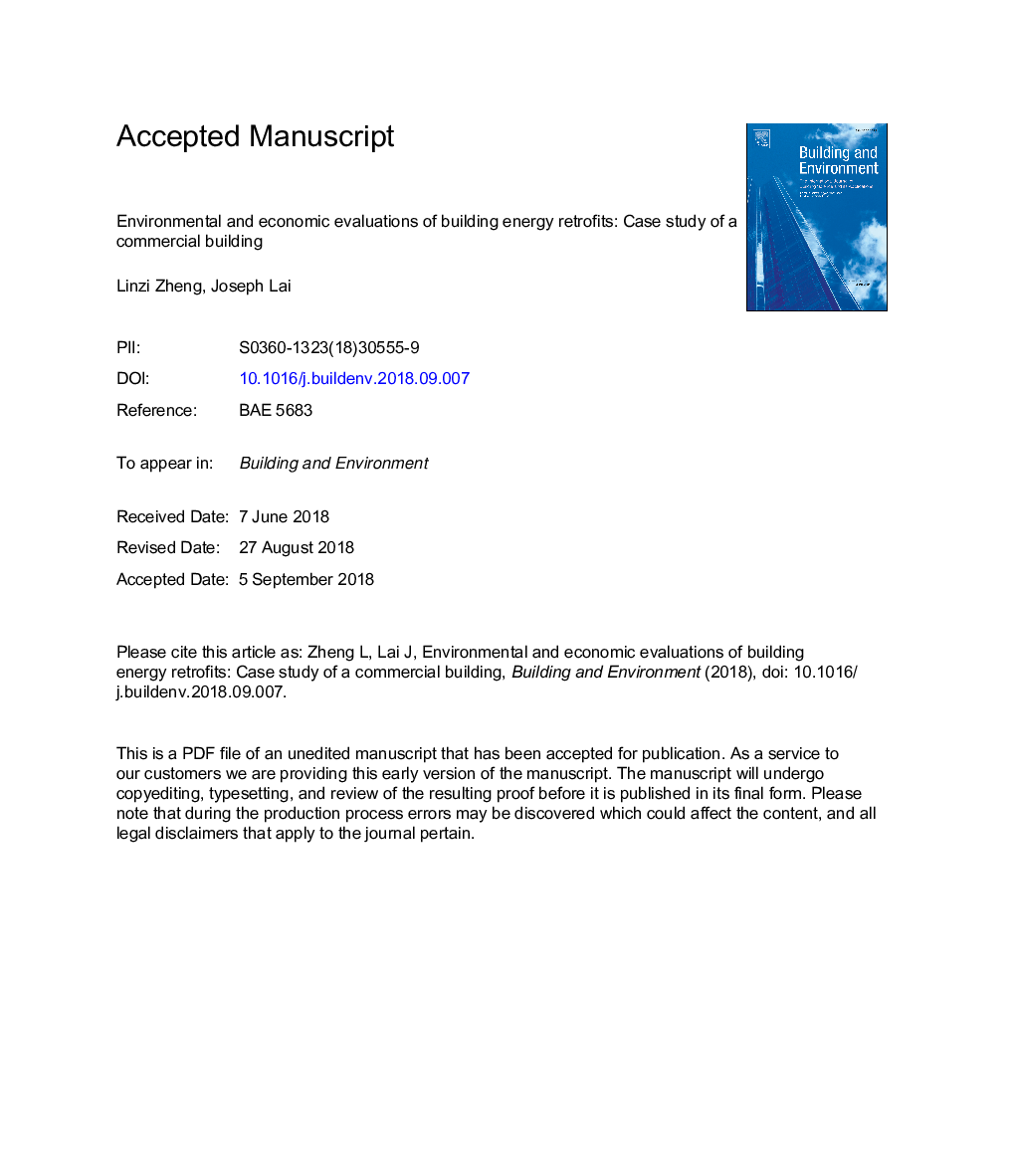| Article ID | Journal | Published Year | Pages | File Type |
|---|---|---|---|---|
| 10150677 | Building and Environment | 2018 | 37 Pages |
Abstract
Implementing energy saving measures (ESMs) in buildings is a critical part of the global de-carbonization process. To private building owners, the cost-effectiveness of ESMs is a major concern. To public policy makers, maximizing carbon reduction within budgets is a common goal. As such, a plethora of studies have been pursued to evaluate the economic or environmental effectiveness of ESMs; however, the reliability of their results are often uncertain due to the dearth of real data. This paper reports a case study on evaluating the retrofit adopted for the air-conditioning (AC) system of a commercial building in Hong Kong. Using longitudinal energy and cost data of the AC system, the economic performance of the retrofit was evaluated by analyzing its net present value and return on investment, and an indicator known as 'carbon reduction efficiency' was introduced to assess the environmental-cum-economic performance of the retrofit. Besides the development of a scaling factor that accounts for the climatic influence on AC energy use, the effect of equipment degradation on the long-term environmental performance of the retrofit was revealed. Providing empirical evidence of economic or environmental effectiveness of ESMs, this study illustrates a rigorous, pragmatic approach to evaluating retrofit projects in real-world buildings.
Related Topics
Physical Sciences and Engineering
Energy
Renewable Energy, Sustainability and the Environment
Authors
Linzi Zheng, Joseph Lai,
